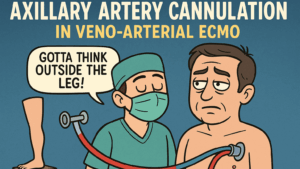Minimally invasive mitral valve surgery (MiMVS), especially through right mini-thoracotomy, is gaining ground as a favorable alternative to the traditional median sternotomy approach. The study titled “Survival Analysis of Minimally Invasive Mitral Valve Surgery Versus Conventional Median Sternotomy in the United States” by Pongsaya Saipia and Songphol Tungjitviboonkun evaluates the surgical outcomes, complications, and survival rates associated with these two techniques using a robust dataset spanning 2015–2024 from the UCSF Medical Center.
Study Objective and Methodology
The primary aim of this retrospective cohort study was to compare survival outcomes between MiMVS and conventional sternotomy for elective mitral valve procedures. Secondary objectives included comparisons of operative time, cross-clamp and cardiopulmonary bypass (CPB) times, hospital length of stay, and perioperative complications.
A total of 422 elective surgeries were evaluated post-exclusion of urgent cases. These included 319 MiMVS and 103 sternotomy procedures. Researchers utilized electronic medical records and applied propensity score matching (PSM) to minimize selection bias. Statistical analyses included Kaplan-Meier survival curves, log-rank tests, and Cox proportional hazards regression.
Key Findings
MiMVS offered several perioperative advantages:
- Shorter hospital stay: Median of 5 days vs. 8 days for sternotomy (p < 0.001).
- Reduced postoperative bleeding: 3.9% vs. 9% for sternotomy.
- Shorter operative metrics: Cross-clamp time (76 vs. 94 minutes) and CPB time (114 vs. 140 minutes) were significantly shorter for MiMVS.
- Lower reoperation rates: 1.7% at five and ten years for MiMVS vs. 2.1% and 3.2% for sternotomy.
Despite these advantages, survival analysis showed no statistically significant difference between the two approaches (log-rank p = 0.07), although a trend favoring MiMVS was noted with a hazard ratio (HR) of 0.30 (95% CI: 0.08-1.12).
Mitral Valve Repair vs. Replacement
A significant discovery was the markedly higher mortality risk associated with mitral valve replacement (HR: 5.22, 95% CI: 1.26-21.61) compared to mitral valve repair. This highlights the clinical priority of attempting valve repair whenever feasible to improve long-term survival outcomes.
Demographics and Comorbidities
The MiMVS group had a significantly lower BMI and fewer smokers. There were no significant differences in age, race, diabetes, HIV status, or COPD prevalence between the groups. However, COPD and male sex were found to be significant predictors of higher mortality, reinforcing the need for individualized surgical planning.
Surgical Technique Trends
The study identified a sharp rise in the adoption of MiMVS after 2016, driven by improved surgeon expertise, advances in technology, and patient preference for less invasive procedures.
Discussion and Clinical Implications
This study aligns with prior research suggesting that MiMVS is associated with reduced morbidity and enhanced recovery without compromising long-term outcomes. However, contrary to earlier findings indicating longer CPB and operative times for MiMVS, this study reported shorter times—suggesting advancements in surgical techniques and team experience.
Importantly, while MiMVS may not yet be proven superior in long-term survival, its benefits in reducing hospitalization, bleeding, and reoperation rates present compelling evidence for broader adoption in suitable candidates. The stark contrast in survival between mitral valve replacement and repair adds a new layer to surgical decision-making.
Limitations and Future Directions
Being a single-center retrospective study, limitations include potential unmeasured biases and limited generalizability. Additionally, the median follow-up of 1.5 years may not fully capture long-term outcomes. Future research should incorporate multicenter data with extended follow-up durations to validate and expand on these findings.
Conclusion
Minimally invasive mitral valve surgery offers distinct advantages over traditional sternotomy, including shorter recovery, less bleeding, and efficient operative times. Although survival benefits were not statistically conclusive, a trend toward improved outcomes with MiMVS supports its continued evolution as a preferred technique. Mitral valve repair, when feasible, should be prioritized due to its significantly lower mortality risk. These findings underscore the need for refined patient selection, surgical training, and long-term outcome tracking in mitral valve surgery.







